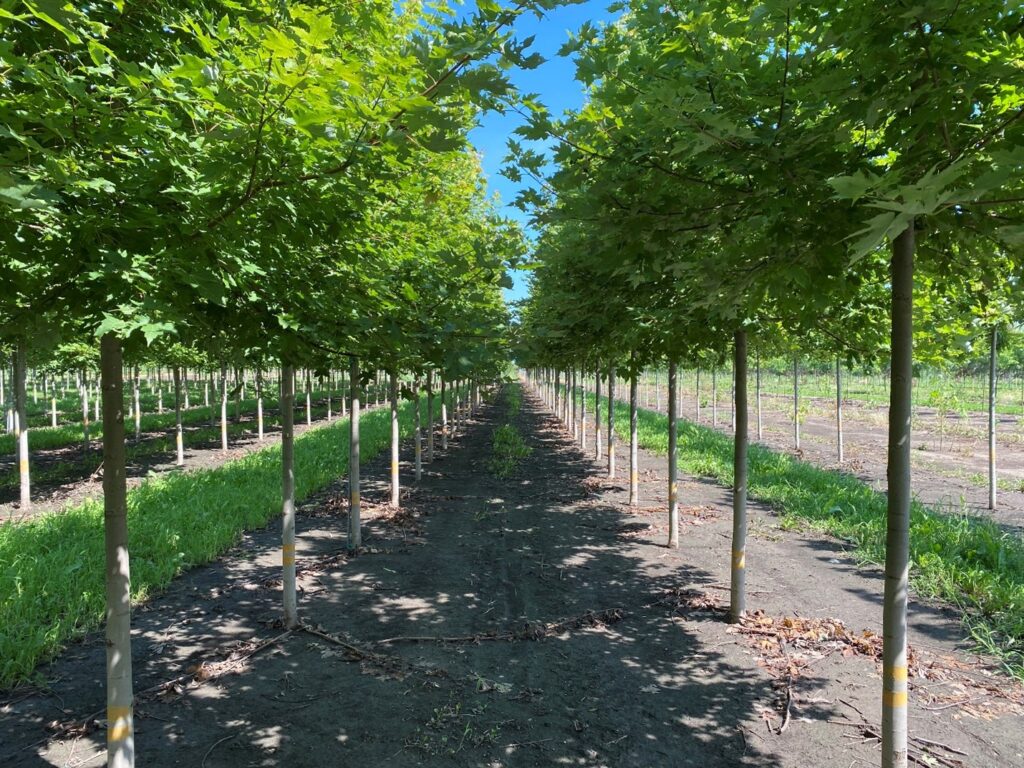By Shahla Werner, Urban Forestry Council Member and Department of Agriculture, Trade and Consumer Protection Plant Protection Section Manager

Urban foresters are increasingly aware of the importance of tree species, age and size diversity to ensure resilient tree canopy and all the associated benefits in their communities. The 20-10-5 rule, which specifies that no more than 20% of trees planted should be from one family, no more than 10% from one genus and no more than 5% from one species (including cultivars), can be helpful in setting tree diversity goals. Applying these guidelines can provide urban forests some protection against huge losses caused by invasive forest pests. For example, the emerald ash borer has already heavily impacted Wisconsin ash and the Asian longhorned beetle, which threatens maple, poplar, willow and other hardwoods but is not yet in Wisconsin. Urban foresters might also consider increasing diversity for other reasons, such as planting basswood, cherry and honeylocust to attract honeybees and other pollinators.
Implementing tree diversity plans can be easier said than done. However, resources like the DNR’s Urban Tree Planting webpage can help urban foresters in reaching tree diversity goals. This tool offers recommendations for small and large urban and park street trees. The webpage also provides a link to the 2020 Diverse Urban Tree Species Survey, which includes lists of lesser-used species that are in high demand for diversifying urban landscapes, such as Kentucky coffeetree, American hornbeam and ironwood.
Once an urban forester develops a tree planting plan, sources of quality tree stock are needed. To that end, the Wisconsin Department of Agriculture, Trade and Consumer Protection (DATCP) licenses over 640 nursery growers and 1,250 nursery dealers each year, many of whom provide a diverse array of tree and shrub species and cultivars that are well adapted to the state’s climate.
A nursery grower is someone who operates a nursery and grows or propagates nursery stock. Licensed nursery growers offer local stock that may carry fewer risks of spreading pests and diseases from outside Wisconsin.
A nursery dealer is anyone who purchases nursery stock for resale. Licensed nursery dealers include landscapers and private arborists who supply and install nursery stock as well as retailers that may import trees from other states while taking measures to avoid hitchhiking regulatory pests like hemlock woolly adelgid and elongate hemlock scale.
Staff at licensed nurseries receive timely information about emerging pests and diseases, as well as restricted or prohibited invasive trees that can’t be sold and are best avoided. Such trees include sawtooth oak, black locust and Siberian elm. DATCP staff also inspect stock at licensed nurseries on a regular basis. You can access, download and sort lists of licensed nursery growers and dealers from DATCP’s nursery licensing webpage (located on the right side of the page). It is important to consult this list, which is updated about once a month, when selecting a local nursery to implement your community’s tree diversity vision.
